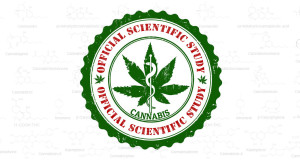ABSTRACT: Increases in marijuana use in recent years highlight the importance of understanding how marijuana affects mental health. Of particular relevance is the effect of marijuana use on anxiety and depression given that marijuana use is highest among late adolescents/early adults, the same age range in which risk for anxiety and depression is the highest. Here we examine ... Continue Reading
Depression
STUDY: Allosteric modulation of the 5-HT3 receptor
ABSTRACT: 5-Hydroxytryptamine type 3 (5-HT3) receptors are ligand-gated ion channels that play important roles in depression, anxiety, substance abuse, emesis, inflammatory pain, spinal nociception, gastrointestinal function, and cardiovascular reflexes. Probably the most studied modulators of 5-HT3 receptors are the high affinity competitive ‘setron’ antagonists typified by ... Continue Reading
STUDY: Allosteric modulation of the 5-HT3 receptor
ABSTRACT: 5-Hydroxytryptamine type 3 (5-HT3) receptors are ligand-gated ion channels that play important roles in depression, anxiety, substance abuse, emesis, inflammatory pain, spinal nociception, gastrointestinal function, and cardiovascular reflexes. Probably the most studied modulators of 5-HT3 receptors are the high affinity competitive ‘setron’ antagonists typified by ... Continue Reading
STUDY: Cannabinoids, Neurogenesis and Antidepressant Drugs: Is there a Link?
ABSTRACT: Similar to clinically used antidepressants, cannabinoids can also regulate anxiety and depressive symptoms. Although the mechanisms of these effects are not completely understood, recent evidence suggests that changes in endocannabinoid system could be involved in some actions of antidepressants. Chronic antidepressant treatment modifies the expression of CB1 ... Continue Reading
STUDY: Evaluation of the potential of the phytocannabinoids, cannabidivarin (CBDV) and Δ9-tetrahydrocannabivarin (THCV), to produce CB1 receptor inverse agonism symptoms of nausea in rats
ABSTRACT: BACKGROUND AND PURPOSE The cannabinoid 1 (CB1) receptor inverse agonists/antagonists, rimonabant (SR141716, SR) and AM251, produce nausea and potentiate toxin-induced nausea by inverse agonism (rather than antagonism) of the CB1 receptor. Here, we evaluated two phytocannabinoids, cannabidivarin (CBDV) and Δ9-tetrahydrocannabivarin (THCV), for their ability to ... Continue Reading

